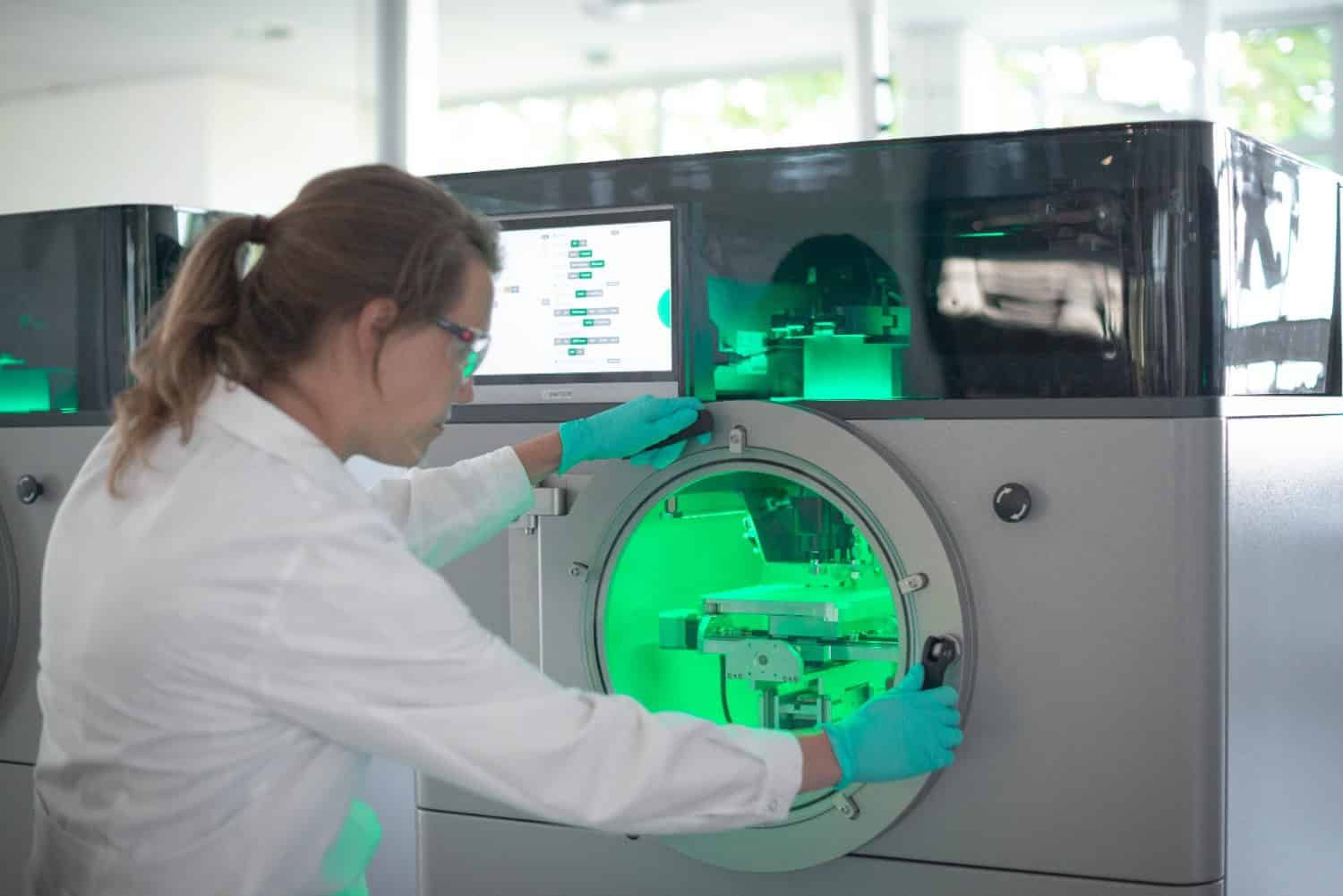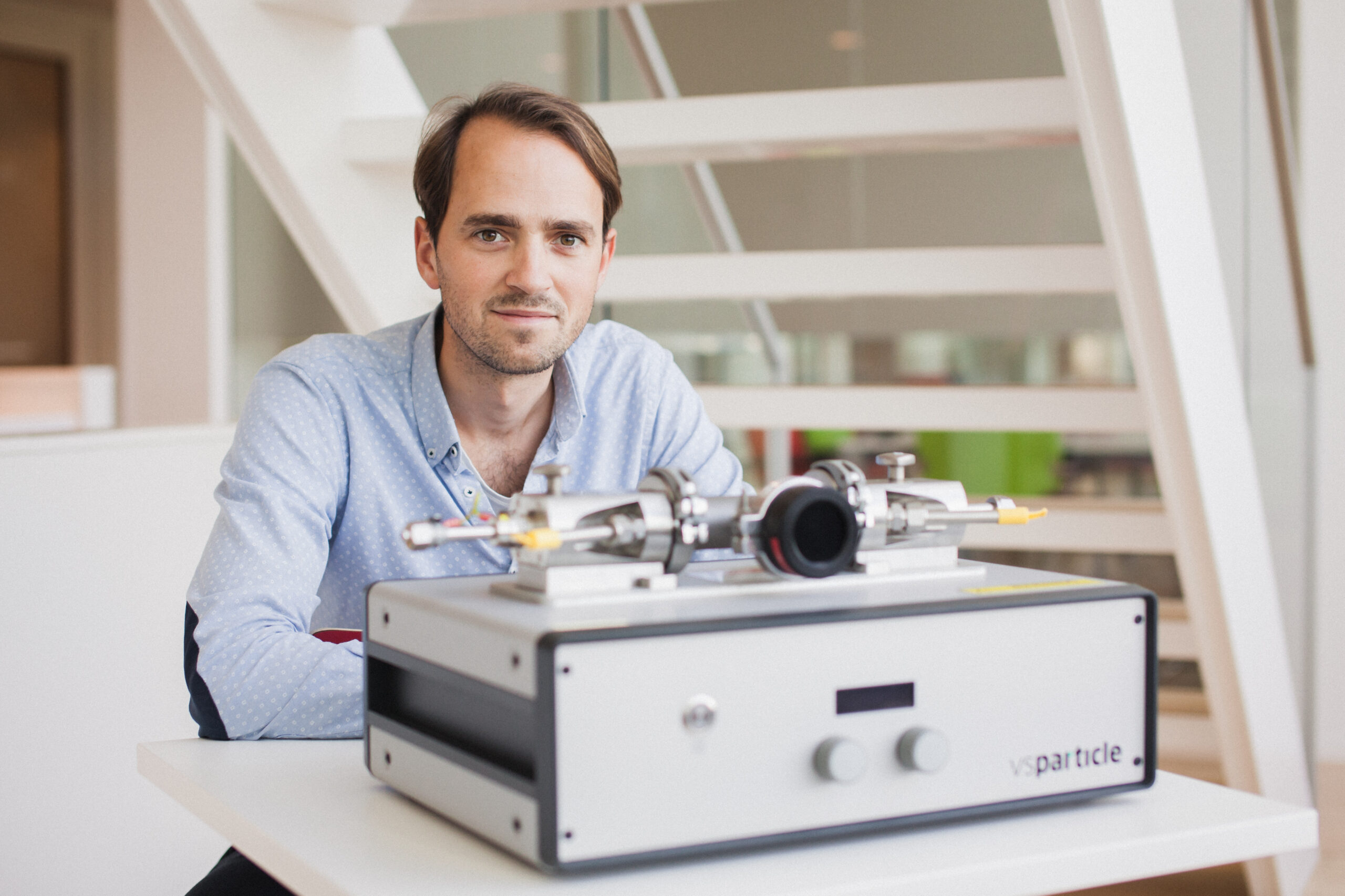
Much of the fate of the energy transition depends on the availability of high-performing materials. Whether for top-notch batteries or efficient electrolyzers for green hydrogen production, materials are the enablers behind these and many more technologies. The clock is ticking, and new solutions are needed to win the race against climate change. However, material development, especially in the inorganic domain, is not fast at all.
VSParticle’s nanoprinting technology comes as a solution to the dire necessity of better materials. The company’s flagship product, the VSP-P1, can break down materials to the size of nanoparticles and produce new ones with the push of a button. Like an inkjet printer, materials such as zinc, aluminum, or titanium can be fed into the machine, mixing them in the desired quantities to create new materials. The device saves a lot of time for material researchers, who can test material structures they print in hours– while the conventional timespan to develop a new material is ten years.
Why this is important:
Transitioning to a greener society requires all possible resources, including the chance to develop new materials faster.
A few weeks ago, the Delft-based company raised €6.5 million to advance the development of its technology. The round, led by Nordic Ninja and Plural, will help the company sustain its operations. IO spoke with Aaike van Vugt, CEO and founder of VSParticle, about this investment round and the company’s prospects.
Why does it take so long to develop inorganic materials?
“Inorganic materials are fully human-developed, and the progress in this space is closely connected to what we can do in material synthesis. By contrast, organic materials can take lots of inspiration from nature – think of all the gene editing technologies. In the past decades, we have seen enormous progress in chip manufacturing, proving that we are good at making small yet powerful structures. But we can’t solve the climate crisis with chips only.”
Why are nanoparticles so important for the energy transition?
”Nanoparticles’ unique capability is the possibility to change material properties by changing their size. For most energy applications, we need nanoporous thin films, fine layers that look like sponges, to drive the performance of batteries or electrolyzers.”
How is your company helping?
“Based on our unique ability to make nanoparticles at the push of a button, we have developed a process to print nanoporous thin films with the same ease. Since these layers are so important to key energy technologies, we are doubling down on them. VSParticle currently supplies more and more material research labs around the world.”
What are nanoparticles?
Nanoparticles are ultrafine units with nanometer dimensions, which have uncommon properties because of their size. One of the most significant ones is that they have quantum effects. At such a scale, altered electrical, optical, and magnetic properties–that can’t be found in bulk materials– can be observed.
What are the current trends in material research?
“The main trend is leveraging existing technology at its best, using robotics as much as possible, and AI-driven material synthesis processes. Our technology helps material development with AI. Our process for nanoporous materials is the fastest and the most flexible, allowing researchers to test nanoparticle structures quickly. This way, they can amass data they can use to train AI models that can help them discover new materials.”
How is this funding round helping you?
“In the past months, we shipped the first VSP-P1 models to European and US customers. Now, we also intend to approach the Asian market, so we need more working capital to expand our business and keep up with our sales funnel, meeting market requirements. In addition, part of this money will go to product development.”

What goals do you have in sight?
“Unlocking a century of material development in a decade is our overarching mission. In the mid-term, we will stay focused on thin film nanoporous materials, given our position in material development and AI. There is a big time difference between introducing a new computer chip, which takes one or two years, and a new-generation battery, which can take up to 15 years. If we get in the position to get on par with chip development times in the next five to ten years, we will be very successful.”

What keeps you motivated?
“It’s still very ingrained in my mind the first time I synthesized some materials with the prototype created by Professor Schmidt-Ott. I remember looking into the microscope and seeing the sample color, zooming in, and noticing the structures coming into the focus. I was amazed by what structures I could make by simply pushing a button. From then on, the feeling of so much potential in the inorganic material space stayed with me. We can do much more, as we have barely scratched the surface. I believe we have discovered less than 1% of the materials we can make.”

